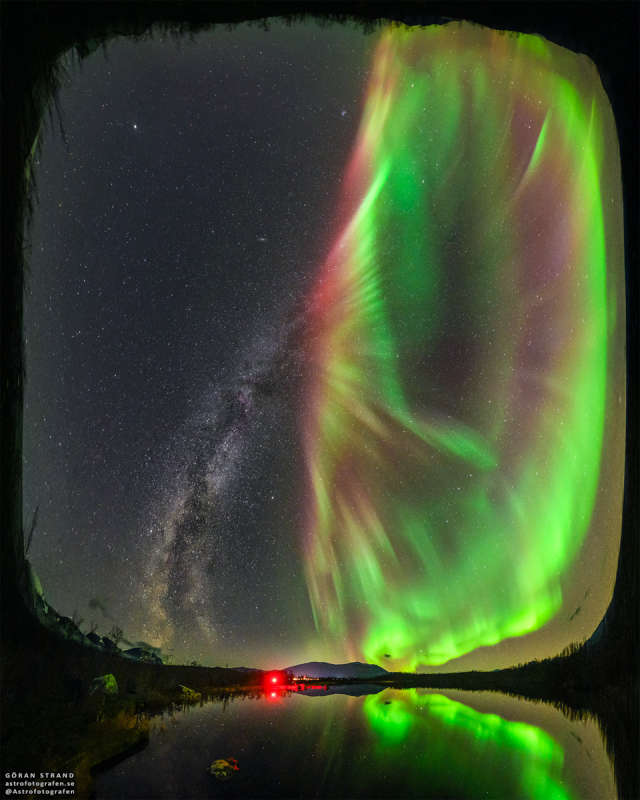
|
Credit & Copyright: Göran Strand
Explanation:
Could the stem of our Milky Way bloom into an auroral flower?
No, not really, even though it may appear that way in
today┴s featured all-sky image.
On the left, the
central plane of our
home galaxy
extends from the horizon past the
middle of the sky.
On the right, an
auroral oval also extends from the sky's center --
but is dominated by bright
green-glowing oxygen.
The two are not physically connected, because the
aurora is relatively nearby, with the
higher red parts occurring in
Earth's atmosphere only about 1000
kilometers high.
In contrast, an average distance to the
stars and nebulas we see in the
Milky Way more like 1000 light-years away - 10 trillion times further.
The featured image
composite was taken in early October across a small lake in
Abisko, northern
Sweden.
As our
Sun's magnetic field evolves into the active part of its
11-year cycle,
auroras near both of Earth's poles are
sure to become
more frequent.
|
January February March April May June July August September October November December |
| |||||||||||||||||||||||||||||||||||||||||||||||||||||||
NASA Web Site Statements, Warnings, and Disclaimers
NASA Official: Jay Norris. Specific rights apply.
A service of: LHEA at NASA / GSFC
& Michigan Tech. U.
Based on Astronomy Picture
Of the Day
Publications with keywords: aurora
Publications with words: aurora
See also:
- APOD: 2025 January 7 ┴ A New Years Aurora and SAR Arc
- APOD: 2024 December 8 ┴ Aurora around Saturns North Pole
- APOD: 2024 October 16 ┴ Colorful Aurora over New Zealand
- APOD: 2024 October 13 ┴ Aurora Timelapse Over Italian Alps
- Northern Lights, West Virginia
- Aurora Australis and the International Space Station
- APOD: 2024 June 26 ┴ Timelapse: Aurora, SAR, and the Milky Way
